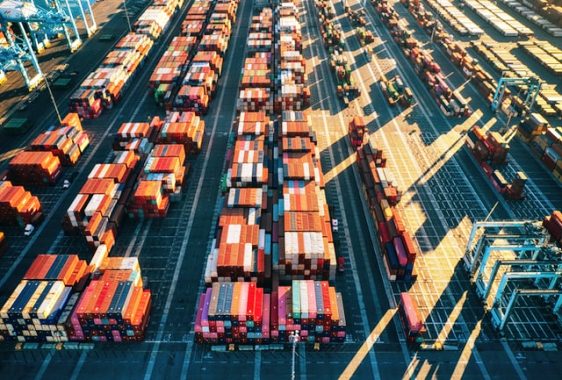-
Announcements by CMA CGM and Hapag-Lloyd early last month that they would cap spot rates may have contributed to the relative stability
-
On the trans-Pacific trade lane, demand continued to surge, with the National Retail Federation estimating that total US ocean import volumes in September increased 18% compared to September 2019
-
Even as carriers continued to add more capacity to the trans-Pacific lane, much of that capacity is being sapped as US ports have become overwhelmed
-
On Asia-Europe lanes, rates stayed elevated as European ports continue to struggle with congestion as well
Peak season demand and widespread port congestion initially pushed global ocean freight rates up early in September, but prices have become level on most lanes since the initial climb, according to the latest market summary from Freightos.
The Freightos Baltic Global index (FBX) increased 6% last month to US$10,916 per forty foot equivalent unit (FEU), 386% higher than a year ago and more than seven times the pre-pandemic norm.
On the trans-Pacific trade lane, demand continued to surge, with the National Retail Federation, the world’s largest retail trade association based in Washington D.C., estimating that total US ocean import volumes in September increased 18% compared to September 2019.
But even as carriers continued to add more capacity to the lane, much of that capacity is being sapped as ports like Los Angeles and Long Beach have become overwhelmed as the number of anchored container ships in San Pedro Bay waiting days for an open berth hit a new high of more than 70.
So even with the added capacity, Asia-US rates climbed at the beginning of September before leveling out, with Asia-US West Coast rates increasing 4% to $19,182/FEU, and Asia-US East Coast prices climbing 11% to $22,234/FEU.
Both rates are more than quadruple their levels a year ago when spiking ocean costs were already riling shippers, said Judah Levine, research lead at Freightos, which operates an online marketplace for international shipping.
Announcements by carriers CMA CGM and Hapag-Lloyd early last month that they would cap spot rates through the start of 2022 may have contributed to the relative stability in trans-Pacific rates for the rest of the month despite no easing in demand and growing congestion at major Chinese origin ports as well.
“Market conditions could test the effectiveness of the policies in keeping ocean costs from climbing, as the cap does not include potential increases in premiums and surcharges,” Levine said.
On Asia-Europe lanes, rates stayed elevated as European ports continue to struggle with congestion as well, and as shippers there compete with US importers for equipment at origin ports.
Asia-North Europe prices increased 7% to $14,756/FEU, a new high and 581% higher than a year ago. Asia-Mediterranean rates were stable, climbing just 2% for the month to $13,139/FEU, 473% higher than last September.
With nearly all of the globe’s container fleet already active, more capacity on the trans-Pacific means fewer ships elsewhere, complicating things for shippers on lower-profile routes like Asia-Middle East and the trans-Atlantic.
Levine noted, for instance, that North Europe-North America East Coast rates increased 16% last month to a record high of $6,986/FEU, quadruple its level a year ago.
Photo by Cameron Venti on Unsplash





